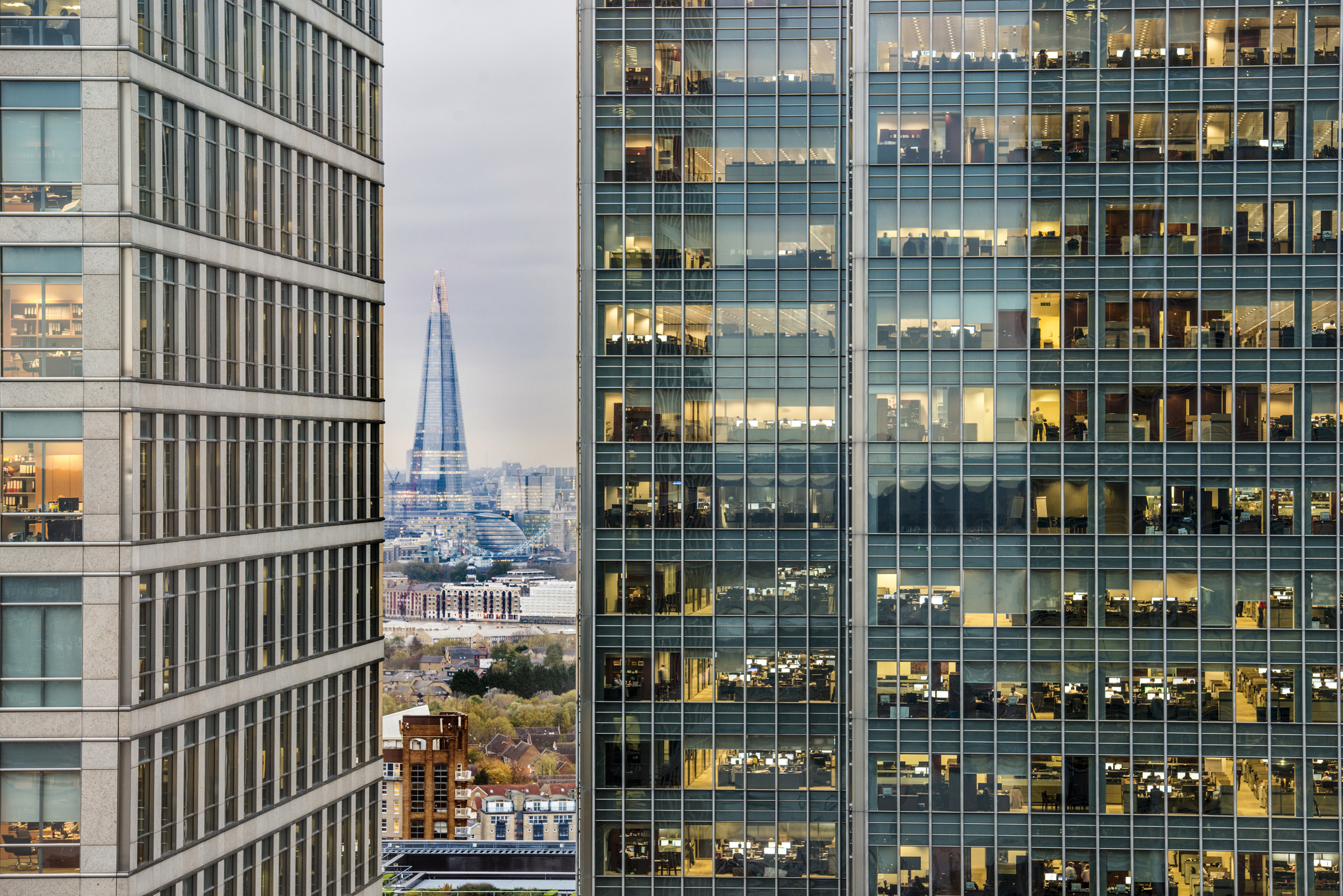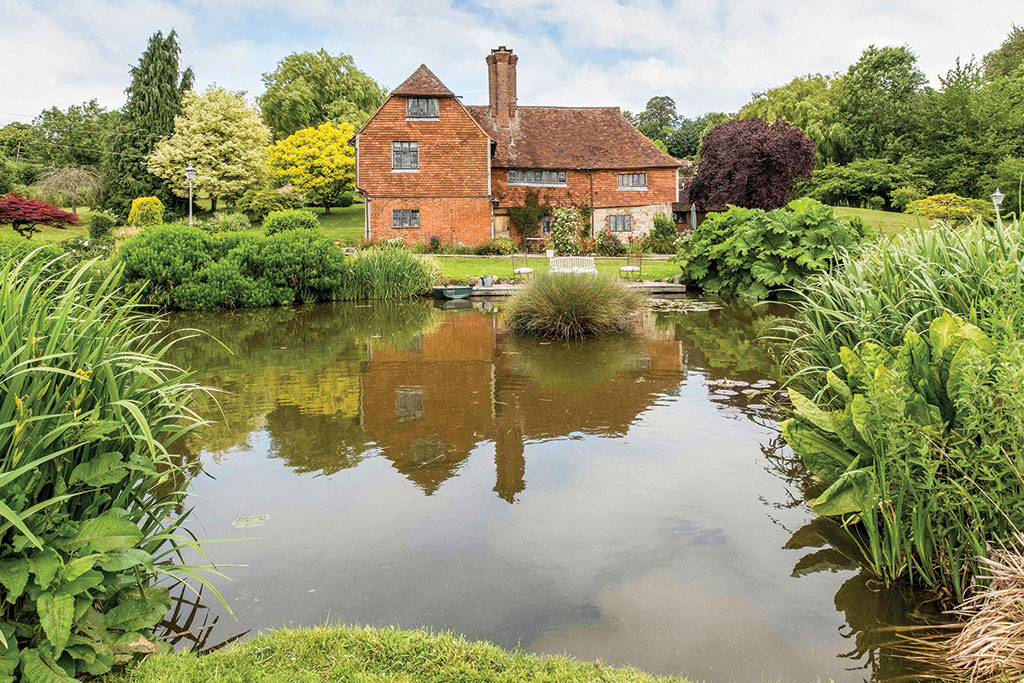
It has been a long winter for the UK’s commercial property sector, but at last it seems spring is in the air. Savills reports that the vacancy rate in the City and West End of London office property market has fallen from a peak of 9.5% in late 2023 to 7.4%, although it is still comfortably above the long-term average of 5.9%.
The rate of growth in online shopping has slowed to the mid-30s in percentage terms, including food, and shopping centres have learned to adapt. Customers see them as a destination. They want to browse in shops, visit cafes and restaurants, and go bowling. Retailers have learned that returns from online shoppers are expensive to handle, so shops are now not just sales outlets, but also showrooms for buying online.
In late 2024, Land Securities paid £490 million for the Liverpool One shopping centre, “one of the premier shopping centres in the UK”, it says. It expects to generate an income return of 7.5% and to grow that figure “meaningfully” over the next few years.
MoneyWeek
Subscribe to MoneyWeek today and get your first six magazine issues absolutely FREE

Sign up to Money Morning
Don't miss the latest investment and personal finances news, market analysis, plus money-saving tips with our free twice-daily newsletter
Don't miss the latest investment and personal finances news, market analysis, plus money-saving tips with our free twice-daily newsletter
A lot of capital has gone into “big-box” distribution hubs, so rental growth is likely to slow in that subsector, says Nick Montgomery, the manager of the Schroder Real Estate Investment Trust (LSE: SREI). But there is a supply shortage of estates with multi-let industrial and distribution units. Meanwhile, the market for the “alternative” property sector, including hotels, self-storage, residential and student accommodation, is mostly healthy.
“There have been plenty of false dawns since the market peaked in late 2022,” says his colleague Richard Gotla, “so it feels a bit like Groundhog Day.
Values have fallen 20%-25% since the peak – less than the 40%-45% [in 2009], but there has been less debt in the sector than then. In addition, rental values were flat then but have risen 10% since late 2022.”
London has returned to the office
Gotla says that “the big story is how little development there has been in recent years”, although it doesn’t seem that way in central London. The return to the office has been more advanced in London than in the regions, but the demands of occupiers have changed. Tenants want more facilities, better energy efficiency and cafes, rather than a small kitchen with a kettle, a microwave and a vending machine.
However, construction costs have gone up sharply, and buildings quickly become obsolete: “they start to depreciate when the builders leave”, says Gotla. With initial rent-free periods of up to three years, leases of up to ten and obsolescence thereafter, “it has become very difficult for developers to make the numbers work”. As a result, rents “are going nuts: £150 per square foot in the City, £250 in the West End”.
This is pulling up the secondary market. Refurbishing a quality building in a good location is much cheaper, allowing landlords to offer shorter leases (around five years) at far lower rents. Refurbishments comprise a large part of Derwent London’s (LSE: DLN) portfolio, and it reports strong demand from tenants. The shares trade on a discount to net asset value (NAV) of 40%.
The shares of Great Portland Estates (LSE: GPE) trade on a discount of 30%, the trust having diluted NAV with a £350 million rights issue at a discount in May 2024. Such issues are never popular with investors, but they reflect managements’ enthusiasm about the outlook. In April, Norway’s sovereign wealth fund paid £570 million for a 25% stake in Shaftesbury Capital’s Covent Garden estate, validating its NAV and reducing its debt. The shares have since risen over 20%, but still trade at a discount of 30% – despite reporting strong performance last year with rental income up 6% and earnings 20% from its West End estate, primarily retail and leisure properties.
Sector giant Land Securities (LSE: LAND), with £10 billion of assets and a 30% discount to NAV, has been adding to the retail segment of its portfolio. Rival British Land (LSE: BLND), with £8.7 billion of assets, has focused on “campuses” such as Broadgate and Canada Water. These encompass offices, but also retail and leisure outlets, and the public spaces in between. A quarter of its assets are in retail parks and 10% in shopping centres. Its shares are on a discount of 30%.
SREI is much smaller, with net assets of £300 million, so it is not going to own any trophy assets. But its smaller size enables it to look for value in areas the larger investors ignore. Its shares trade at a 20% discount, but the yield, close to 7% and fully covered by earnings, is attractive. Moreover, rental income of £30 million is well below “reversionary rent” of £40 million – the rent its properties would command if re-let now. Less than 10% of the portfolio is in London and over 40% in the North, while multi-let industrial accounts for half the portfolio, offices a quarter and retail warehouses half of the rest. Although its debt is significant, 75% of it is locked in for 11 years at a cost of just 2.5% a year, so it has been little affected by higher rates, but will benefit markedly from an improving market.
Schroders forecasts a total annual return of 8%- 10% for UK real estate over the next four years, which would ensure both higher dividends and capital appreciation. The group is keen to add value to the portfolio from repurposing units on its estate and redeveloping tired buildings. Montgomery also sees opportunities in affordable housing in the inflation-linked income from hotels, “but it is more interesting to be an owner and operator than just an owner”.
Sentiment in the property market is vulnerable to higher gilt yields and global factors, he warns, but with interest rates likely to trail lower, there should be a recovery. “With a shortage of supply, we don’t need a surge in demand to see decent returns.” Share prices in the sector have started to discount such a recovery, but there should be much more to go for.
This article was first published in MoneyWeek's magazine. Enjoy exclusive early access to news, opinion and analysis from our team of financial experts with a MoneyWeek subscription.
Get the latest financial news, insights and expert analysis from our award-winning MoneyWeek team, to help you understand what really matters when it comes to your finances.

Max has an Economics degree from the University of Cambridge and is a chartered accountant. He worked at Investec Asset Management for 12 years, managing multi-asset funds investing in internally and externally managed funds, including investment trusts. This included a fund of investment trusts which grew to £120m+. Max has managed ten investment trusts (winning many awards) and sat on the boards of three trusts – two directorships are still active.
After 39 years in financial services, including 30 as a professional fund manager, Max took semi-retirement in 2017. Max has been a MoneyWeek columnist since 2016 writing about investment funds and more generally on markets online, plus occasional opinion pieces. He also writes for the Investment Trust Handbook each year and has contributed to The Daily Telegraph and other publications. See here for details of current investments held by Max.
-
 8 of the best ski chalets for sale now
8 of the best ski chalets for sale nowThe best ski chalets on the market – from a traditional Alpine-style chalet in Switzerland to an award-winning Modernist building in Japan’s exclusive ski areas
-
 The consequences of the Autumn Budget – and what it means for the UK economy
The consequences of the Autumn Budget – and what it means for the UK economyOpinion A directionless and floundering government has ducked the hard choices at the Autumn Budget, says Simon Wilson
-
 8 of the best houses for sale with electric vehicle charging
8 of the best houses for sale with electric vehicle chargingThe best houses for sale with electric vehicle charging – from a converted World War II control tower in Scotland, to a Victorian country house in Cumbria
-
 Profit from a return to the office with Workspace
Profit from a return to the office with WorkspaceWorkspace is an unloved play on the real estate investment trust sector as demand for flexible office space rises
-
 8 of the best properties for sale with wildlife ponds
8 of the best properties for sale with wildlife pondsThe best properties for sale with wildlife ponds – from a 16th-century house in the Ashdown Forest, to a property on Pembrokeshire’s Preseli Hills
-
 Chen Zhi: the kingpin of a global conspiracy
Chen Zhi: the kingpin of a global conspiracyChen Zhi appeared to be a business prodigy investing in everything from real estate to airlines. Prosecutors allege he is the head of something more sinister
-
 8 of the best converted industrial properties for sale
8 of the best converted industrial properties for saleThe best converted industrial properties for sale – from a Victorian railway station in Norfolk to a Grade II-listed former water tower with views of the River Alde
-
 8 of the best houses for sale with fishing rights
8 of the best houses for sale with fishing rightsThe best houses for sale with fishing rights – from a Georgian property on the banks of the River Derwent, County Durham, to a restored mill house in Marlborough with fishing rights on the River Kennet


